Resident Crews of Salyut 7
![]()
Salyut 7 |
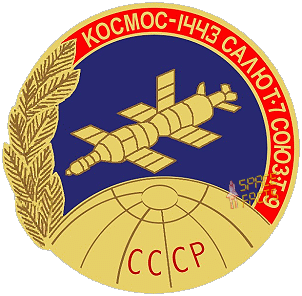 |
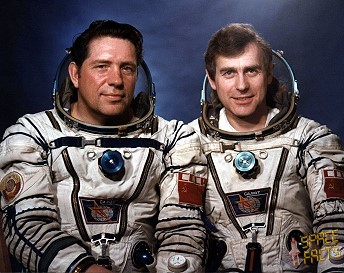
|
|
alternative crew photo |
alternative crew photo |
alternative crew photo |
alternative crew photo |
alternative crew photo |
alternative crew photo |
![]()
Crew, launch- and landing data
| No. | Nation | Surname | Given names | Position | Spacecraft (launch) |
Launch date |
Launch time |
Spacecraft (landing) |
Landing date |
Landing time |
Mission duration |
Orbits |
| 1 | Lyakhov | Vladimir Afanasiyevich | Commander | Soyuz T-9 | 27.06.1983 | 09:12:18 UTC | Soyuz T-9 | 23.11.1983 | 19:58:19 UTC | 149d 10h 46m 02s | 2365 | |
| 2 | Aleksandrov | Aleksandr Pavlovich | Flight Engineer | Soyuz T-9 | 27.06.1983 | 09:12:18 UTC | Soyuz T-9 | 23.11.1983 | 19:58:19 UTC | 149d 10h 46m 02s | 2365 |
Backup Crew
| No. | Nation | Surname | Given names | Position |
| 1 | Titov | Vladimir Georgiyevich | Commander | |
| 2 | Strekalov | Gennadi Mikhailovich | Flight Engineer |
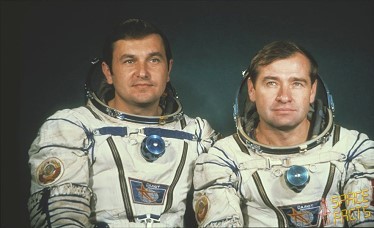 |
alternative crew photo |
alternative crew photo |
Expedition Report
|
Launch from the Baikonur Cosmodrome and
landing 160 km east of Dzheskasgan. Following a one-day solo flight Soyuz T-9 docked with Salyut 7-Kosmos 1443 on June 28, 1983. The cosmonauts became the second resident crew of the station. Almost immediately after docking at Salyut 7’s aft port, the crew entered Kosmos 1443 and commenced transferring the 3.5 tons of cargo lining its walls to Salyut 7. This included solar arrays to augment Salyut 7's power, to have been installed by the crew of the aborted Soyuz T-8. On July 27, 1983 a small object struck a Salyut 7 viewport. It blasted out a 4 mm crater, but did not penetrate the outer of the windows two panes. It was not clear, if it was orbital debris or from a meteor shower. On August 16, 1983 Soyuz T-9 was repositioned by rotating Salyut 7, freeing the aft port for Progress 17. Unmanned supply vessel Progress 17 to Salyut 7 docked with Salyut 7 on August, 19 1983 at 13:47:00 UTC, undocked on September 17, 1983 at 11:44:00 UTC and was destroyed in reentry on September 17, 1983 at 23:43:00 UTC. During refueling by Progress 17, the main oxidizer line of the Salyut 7 propulsion system ruptured. The seriousness of the malfunction was not immediately apparent in the West. However, after the malfunction, Salyut 7 had to rely on the main propulsion systems of visiting Progress freighters for maintaining orbital altitude. The crew loaded Kosmos 1443’s VA capsule with 350 kg of experiment results and hardware no longer in use. It could have held 500 kg, had they had that much to put in. Kosmos 1443 then undocked, in spite of Western predictions that the FGB component would remain attached to Salyut 7 as a space station module. The VA capsule soft-landed on August 23, 1983 and the FGB component continued in orbit until it was deorbited over the Pacific Ocean on September 19, 1983. On September 26, 1983 a Soyuz spacecraft (Soyuz T-10A) bearing Vladimir Titov and Gennadi Strekalov stood atop a Soyuz booster at Baikonur Cosmodrome. This was the Soyuz T-8 crew, again set to accomplish their mission of augmenting the Salyut 7 solar arrays. About 90 sec before planned launch time, the booster caught fire. Vladimir Titov and Gennadi Strekalov, who had been unable to dock with Salyut 7 on the Soyuz T-8 mission, were rocketed away from the pad by the Soyuz escape tower, while the booster exploded behind them, free of the booster, which exploded on the pad. Progress 18 resupplied the station on October 22, 1983 - November 13, 1983. The freighter boosted Salyut to 326 x 356 km orbit on November 04, 1983, undocked on November 13, 1983 at 03:08:00 UTC and was destroyed in reentry on November 16, 1983 at 04:18:00 UTC. The first EVA was performed by Vladimir Lyakhov and Aleksandr Aleksandrov on November 01, 1983 (2h 50m). The solar arrays on the Salyut 6 space station underwent rapid degradation in their ability to produce electrical power due to UV and atomic oxygen exposure, so Salyut 7 was designed to have its arrays augmented over the course of its occupancy to restore lost capacity. Solar array extensions for the central (top) array were delivered by the automated Cosmos 1443 vehicle (March 1983). The EVA to augment the power-starved station's solar arrays was originally to have been performed by cosmonauts Vladimir Titov and Gennadi Strekalov, but they were unable to dock their Soyuz T-8 spacecraft with Salyut 7. Gennadi Strekalov and Vladimir Titov's next attempt to pay a service call to Salyut 7 (Soyuz T-10A) was stymied when their launch vehicle exploded seconds before scheduled liftoff. The Soyuz-T escape system functioned as designed, so neither Gennadi Strekalov nor Vladimir Titov was injured. However, the Salyut 7 power shortage grew acute, so flight controllers tapped Vladimir Lyakhov and Aleksandr Aleksandrov to perform the EVA. Some sources state that the cosmonauts practiced the procedure a dozen times in the Hydrolaboratory at Star City. During preparations, Aleksandr Aleksandrov discovered a tear in his suit's primary pressure bladder. The cosmonauts mended this and the suit performed nominally during the EVA. For this EVA the cosmonauts used the same Orlan-D space suits that Valentin Lebedev and Anatoli Berezovoy used. Vladimir Lyakhov became the first Russian to perform a second EVA. Aleksandr Aleksandrov set up a TV camera on a movable arm so flight controllers in the TsUP could monitor the EVA, then the cosmonauts took up position in foot restraints and removed the add-on array from its container. Salyut 6 EVA cosmonaut Valeri Ryumin was shift chief in the TsUP for the EVA. Forty minutes into the EVA they passed out of range of Soviet ground stations and tracking ships for 50 minutes. Much of the time out of range the cosmonauts spent in darkness. They awaited orbital sunrise so they could resume work. They then used a special "compact and convenient" winch to unfurl the add-on array along one side of the existing array. A total of 48 operations were needed to deploy the array nominally, with up to 189 operations required in contingency situations. The 5-m-long (16.4-m-long), 1.5-m-wide (5-ft-wide) add-on array increased available power by 25 percent. Vladimir Lyakhov received a reprimand from the TsUP for releasing bits of junk to watch them float away - the glittering objects could interfere with Salyut 7's star sensors. Both cosmonauts went out of the space station for another spacewalk on November 03, 1983 (2h 55m). During this EVA, Vladimir Lyakhov and Aleksandr Aleksandrov followed the same procedure they used to install the first add-on solar array two days earlier. This marked the first time the Soviets performed two EVAs in one mission. The EVA was planned so that the principal activities occurred when the station was in daylight and in radio contact with the TsUP. The two add-on arrays installed by Vladimir Lyakhov and Aleksandr Aleksandrov increased Salyut 7's electrical capacity by 800W. The Soyuz spacecraft is composed of three elements attached end-to-end - the Orbital Module, the Descent Module and the Instrumentation/Propulsion Module. The crew occupied the central element, the Descent Module. The other two modules are jettisoned prior to re-entry. They burn up in the atmosphere, so only the Descent Module returned to Earth. Having shed two-thirds of its mass, the Soyuz reached Entry Interface - a point 400,000 feet (121.9 kilometers) above the Earth, where friction due to the thickening atmosphere began to heat its outer surfaces. With only 23 minutes left before it lands on the grassy plains of central Asia, attention in the module turned to slowing its rate of descent. Eight minutes later, the spacecraft was streaking through the sky at a rate of 755 feet (230 meters) per second. Before it touched down, its speed slowed to only 5 feet (1.5 meter) per second, and it lands at an even lower speed than that. Several onboard features ensure that the vehicle and crew land safely and in relative comfort. Four parachutes, deployed 15 minutes before landing, dramatically slowed the vehicle's rate of descent. Two pilot parachutes were the first to be released, and a drogue chute attached to the second one followed immediately after. The drogue, measuring 24 square meters (258 square feet) in area, slowed the rate of descent from 755 feet (230 meters) per second to 262 feet (80 meters) per second. The main parachute was the last to emerge. It is the largest chute, with a surface area of 10,764 square feet (1,000 square meters). Its harnesses shifted the vehicle's attitude to a 30-degree angle relative to the ground, dissipating heat, and then shifted it again to a straight vertical descent prior to landing. The main chute slowed the Soyuz to a descent rate of only 24 feet (7.3 meters) per second, which is still too fast for a comfortable landing. One second before touchdown, two sets of three small engines on the bottom of the vehicle fired, slowing the vehicle to soften the landing. |
EVA data
| Name | Start | End | Duration | Mission | Airlock | Suit | |
| EVA | Aleksandrov, Aleksandr | 01.11.1983, 04:4? UTC | 01.11.1983, 07:3? UTC | 2h 50m | Soyuz T-9 | Salyut 7 | Orlan-D No. 46 |
| EVA | Lyakhov, Vladimir | 01.11.1983, 04:4? UTC | 01.11.1983, 07:3? UTC | 2h 50m | Soyuz T-9 | Salyut 7 | Orlan-D No. 45 |
| EVA | Aleksandrov, Aleksandr | 03.11.1983, 03:47 UTC | 03.11.1983, 06:42 UTC | 2h 55m | Soyuz T-9 | Salyut 7 | Orlan-D No. 46 |
| EVA | Lyakhov, Vladimir | 03.11.1983, 03:47 UTC | 03.11.1983, 06:42 UTC | 2h 55m | Soyuz T-9 | Salyut 7 | Orlan-D No. 45 |
Relocations of Manned Spacecrafts
| Spacecraft | from | Undocking | Time UTC | to | Redocking | Time UTC |
| Soyuz T-9 | Salyut 7- aft port | 16.08.1983 | 14:25 | Salyut 7 - front port | 16.08.1983 | 14:45 |
Photos / Graphics
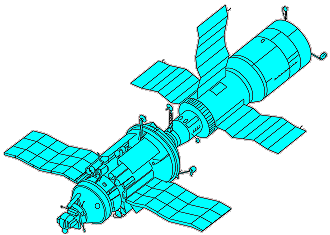 |
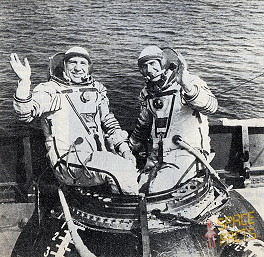 |
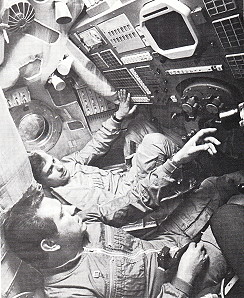 |
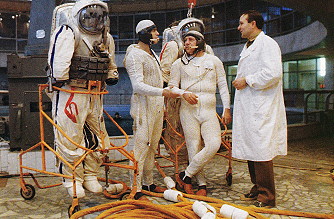 |
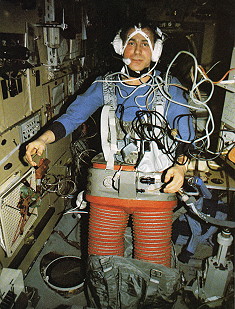 |
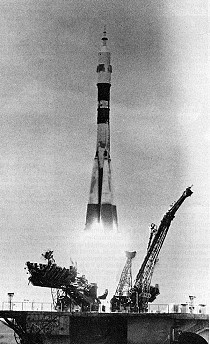 |
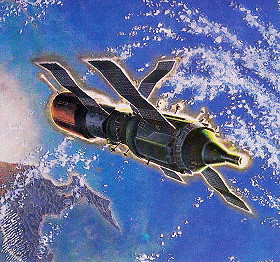 |
 |
 |
 |
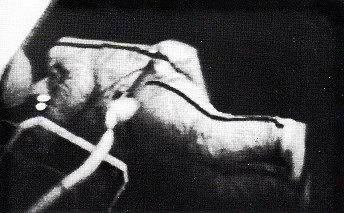 |
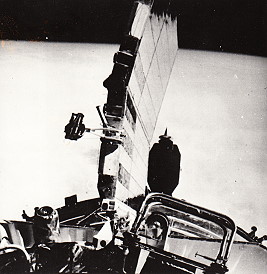 |
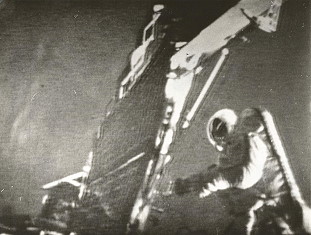 |
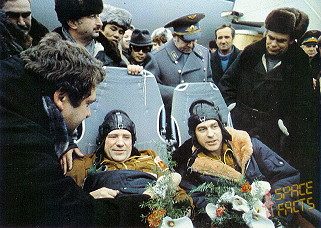 |
| © |  |
Last update on April 30, 2020.  |
 |